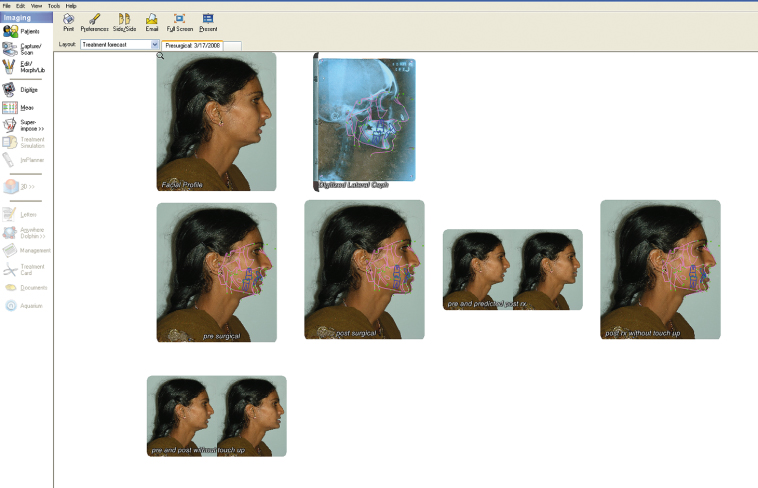

Sample size estimation was performed by using NCSS (Number Cruncher Statistical Systems. The power analysis revealed that a total sample size of 30 (15 per group) was needed to detect clinically meaningful differences between the groups with a power of 80% at 0.05 significance level. A power analysis was performed to calculate the sample size required for the study. This study was organized retrospectively as a parallel group design with 1:1 ratio between the groups. Thus, the aim of this study is to investigate the skeletal, dental and soft tissue changes that occur due to orthodontic treatment with 1 lower incisor extraction and compare it with 4 first premolar extractions. However, there isn't sufficient number of researches examining the effects of lower incisor extraction. There are a good number of researches examining the effects of orthodontic treatment involving premolar extractions with different extraction sequences.

Oppositions to this alternative treatment method with a different extraction option are based on clinical observations instead of scientific evidence. However, it is not popular in the orthodontic practice despite the evident advantages.

Lower incisor extraction is a treatment option which gives clinician the direct intervention opportunity to the problematic area in patients with mandibular anterior crowding. However, the concern about the esthetic outcomes of premolar extractions remains fashionable, for both the professionals and the community. Later, alternative extraction sequences such as upper and lower second premolars or second premolars from one arch and first premolars from the other were accepted. Until the late 50's the term extraction almost meant the removal of all four first premolars. Tooth extraction is often preferred to obtain a satisfying functional and esthetic result in orthodontic treatment and its effects on dentofacial structures has been searched for years. Upper and lower lips retruded in both groups.Ĭonclusion: Lower incisor extraction can be an alternative to 4 premolar extractions when little dental arch changes and localized treatment effects are desired. The differences between the groups were significant for all parameters related with lower incisors. L1-NB distance (p ≤ 0.01), L1/NB (p ≤ 0.01) angle and L1/MP (p ≤ 0.05) angle showed significant decreases in the second group. Results: SNGoGn angle increased in the first group, decreased in the second group and significant difference (p ≤ 0.05) was found between the groups. The pretreatment and post treatment lateral cephalograms were analyzed. 16 patients with a mean age of 18.4 ± 3.4 years and treated with 4 first premolar extractions were included in the second group. Materials and Methods: Among 32 patients showing Class I malocclusion, 16 patients with a mean age of 22.0 ± 4.6 years and treated with 1 lower incisor extraction were included in the first group. Objectives: To examine the dentofacial effects of orthodontic treatment with 1 lower incisor extraction in comparison with 4 premolar extractions. This is an open-access article distributed under the terms of the Creative Commons Attribution License, which permits unrestricted use, distribution, and reproduction in any medium, provided the original author and source are credited. Received: Octo| Accepted: Novem| Published: November 25, 2015Ĭitation: Kaya B, Polat-Özsoy Ö, Erken S, Özsoy FS (2015) Assessment of Dentofacial Effects of Lower Incisor Versus 4 Premolar Extractions. Burcak Kaya, Associate Professor, Department of Orthodontics, Faculty of Dentistry, Baskent University, 1.


 0 kommentar(er)
0 kommentar(er)
